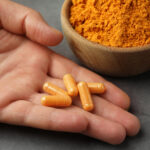Ancient golden spice outperforms modern recovery supplements, new study confirms
 (NaturalHealth365) While most fitness enthusiasts reach for cheap (toxic) protein powders and chemical-laden recovery drinks after exercise, a new study published in the Journal of the International Society of Sports Nutrition reveals a common kitchen spice might be the recovery solution they’re missing. This 4,000-year-old culinary staple costs pennies per serving but packs a powerful punch against post-workout inflammation.
(NaturalHealth365) While most fitness enthusiasts reach for cheap (toxic) protein powders and chemical-laden recovery drinks after exercise, a new study published in the Journal of the International Society of Sports Nutrition reveals a common kitchen spice might be the recovery solution they’re missing. This 4,000-year-old culinary staple costs pennies per serving but packs a powerful punch against post-workout inflammation.
Most people completely overlook this natural anti-inflammatory agent hiding in plain sight in their spice cabinet. This golden kitchen staple targets exercise inflammation at the cellular level, with remarkable effects on muscle recovery that conventional post-workout protocols often miss.
Breakthrough research reveals curcumin’s surprising effects on post-exercise recovery
Scientists conducting a systematic review of 11 studies discovered that curcumin – the active compound in turmeric – helps correct muscle damage and reduces inflammation after physical activity. The analysis focused on adults who exercise at least three times weekly, examining curcumin’s effects on post-workout recovery.
The findings add compelling evidence for natural recovery approaches. Exercise naturally damages muscle fibers, reduces strength, and increases membrane permeability – and the research suggests curcumin helps address this inflammatory response through multiple biochemical pathways.
Curcumin particularly effective following specific types of exercise
The research specifically focused on eccentric exercises – activities like squats, pull-ups, lunges, running, and bicep curls that lengthen muscles while they contract. These activities typically reduce muscle strength by a significant 62%, making recovery crucial.
The analysis found that consistent curcumin consumption offers several benefits:
- Anti-inflammatory effects
- Relief from muscle soreness symptoms
- Antioxidant protection
- Support for recovery after exercise
Most notably, curcumin appears particularly effective at relieving delayed-onset muscle soreness (DOMS) – the uncomfortable pain that typically appears 24-48 hours after eccentric exercise and can significantly impact training consistency.
The molecular magic behind curcumin’s remarkable recovery powers
How does a simple spice outperform expensive commercial formulations? The answer lies in curcumin’s unique biochemical structure. This golden compound contains powerful enzymes including glutathione peroxidase, superoxide dismutase and catalase – the body’s premier antioxidant defense system.
Curcumin’s 1,3-diketone structure combined with its phenyl ring acts as a free radical neutralizer, preventing oxidative damage throughout muscle tissue. Perhaps most importantly, it suppresses inflammatory cytokines while reducing C-reactive protein concentrations – providing a two-pronged attack against exercise-induced inflammation.
What supplement companies fear most is this simple truth: curcumin delivers these benefits without the artificial sweeteners, preservatives, and fillers found in commercial recovery products.
Practical ways to incorporate this ancient remedy into your recovery routine
Health experts suggest consuming one to four grams of curcumin after exercise. There are several ways to add this beneficial spice to your post-workout routine:
- Taking curcumin in capsule form, which research suggests may enhance its effectiveness for pain relief
- Sprinkling powdered turmeric into protein shakes
- Creating “golden milk” recovery drinks with turmeric, milk, and raw honey
- Incorporating turmeric into post-workout meals with eggs, rice, or roasted vegetables
For optimal results, timing and consistency matter. The studies indicate curcumin must be consumed in a specific pattern – either before, during, or consistently after workouts – to enjoy its beneficial effects.
The research suggests that encapsulated forms may be particularly effective, as the study noted that curcumin is “even more effective at masking pain when its stability is bolstered through encapsulation.”
This research sheds new light on what traditional medicine systems have utilized for centuries. While many focus exclusively on protein and hydration for recovery, this common kitchen spice may deserve a place in your post-workout nutrition plan.
Sources for this article include:



